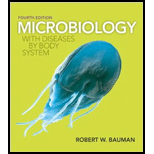
Concept explainers
Why aren’t the terms recombinant DNA technology (genetic engineering) and
To tell:
Why the terms recombinant DNA technology and biotechnology are not synonymous.
Introduction:
The recombinant DNA technology involves isolation of genetic materials (DNA) from donor organisms (human, plant, or microorganism) and insertion of them into recipient organisms after genetic manipulation. The main tools involved in the techniques are nucleic acids, restriction enzymes, ligase, vectors, reverse transcriptase, and mutagens. This technology is used to introduce genetically modified organism (GMO). The main goals of this technology are to provide (i) elimination of undesirable phenotypic traits in organisms, (ii) creation of new organisms by combining two or more beneficial traits of donor organisms, and (iii) synthesis of beneficial products by the new organism for human need.
Explanation of Solution
Biotechnology is the use of microbes to produce or make products for human needs such as alcohol, cheese, bread, and soy sauce. This technology was used to produce large quantities of antibiotics, acetone, and butanol using bacterial metabolic reactions in the 20th century. Recently, biotechnology is used to make vitamins, paper and textiles, and it is also involved for cleaning oil spills, industrial waste, and radioactive isotopes. Also, it helps for mining metals, like gold, copper, and uranium.
The recombinant DNA technology or genetic engineering is a type of biotechnology, which involves in the alteration of genetic material and phenotype of organisms for human benefits. It is used to replace the mutant gene with a normal gene for clinical uses and other applications. It also helps to create genetically modified organisms (GMO).
Biotechnology is used to produce large quantities of biological products and recombinant DNA technology is used to alter genotype or phenotype of organisms.
Want to see more full solutions like this?
Chapter 8 Solutions
Microbiology with Diseases by Body System (4th Edition)
- What are Clathrin coated vesicles and what is their function?arrow_forwardHow is a protein destined for the Endoplasmic Reticulum (ER), imported into the ER? Be concise.arrow_forwardFind out about the organisations and the movements aimed at the conservation of our natural resources. Eg Chipko movement and Greenpeace. Make a project report on such an organisation.arrow_forward
- What are biofertilizers and mention the significancearrow_forwardPCBs and River Otters: Otters in Washington State’s Green-Duwamish River have high levels of polychlorinated biphenyls (PCBs) in their livers. PCBs can bind to the estrogen receptors in animals and disrupt the endocrine system of these otters. The PCBs seem to increase the estrogen to androgen ratio, skewing the ratio toward too much estrogen. How would increased estrogen affect the river otter population? Based on your reading of the materials in this unit, what factors can affect fertility in humans? Explain how each of the factors affecting human fertility that you described can disrupt the human endocrine system to affect reproduction.arrow_forwardOther than oil and alcohol, are there other liquids you could compare to water (that are liquid at room temperature)? How is water unique compared to these other liquids? What follow-up experiment would you like to do, and how would you relate it to your life?arrow_forward
- Selection of Traits What adaptations do scavengers have for locating and feeding on prey? What adaptations do predators have for capturing and consuming prey?arrow_forwardCompetition Between Species What natural processes limit populations from growing too large? What are some resources organisms can compete over in their natural habitat?arrow_forwardSpecies Interactions Explain how predators, prey and scavengers interact. Explain whether predators and scavengers are necessary or beneficial for an ecosystem.arrow_forward
- magine that you are conducting research on fruit type and seed dispersal. You submitted a paper to a peer-reviewed journal that addresses the factors that impact fruit type and seed dispersal mechanisms in plants of Central America. The editor of the journal communicates that your paper may be published if you make ‘minor revisions’ to the document. Describe two characteristics that you would expect in seeds that are dispersed by the wind. Contrast this with what you would expect for seeds that are gathered, buried or eaten by animals, and explain why they are different. (Editor’s note: Providing this information in your discussion will help readers to consider the significance of the research).arrow_forwardWhat is the difference between Uniporters, Symporters and Antiporters? Which of these are examples of active transport?arrow_forwardWhat are coupled transporters?arrow_forward
 Human Heredity: Principles and Issues (MindTap Co...BiologyISBN:9781305251052Author:Michael CummingsPublisher:Cengage Learning
Human Heredity: Principles and Issues (MindTap Co...BiologyISBN:9781305251052Author:Michael CummingsPublisher:Cengage Learning Biology (MindTap Course List)BiologyISBN:9781337392938Author:Eldra Solomon, Charles Martin, Diana W. Martin, Linda R. BergPublisher:Cengage Learning
Biology (MindTap Course List)BiologyISBN:9781337392938Author:Eldra Solomon, Charles Martin, Diana W. Martin, Linda R. BergPublisher:Cengage Learning Biology Today and Tomorrow without Physiology (Mi...BiologyISBN:9781305117396Author:Cecie Starr, Christine Evers, Lisa StarrPublisher:Cengage Learning
Biology Today and Tomorrow without Physiology (Mi...BiologyISBN:9781305117396Author:Cecie Starr, Christine Evers, Lisa StarrPublisher:Cengage Learning Concepts of BiologyBiologyISBN:9781938168116Author:Samantha Fowler, Rebecca Roush, James WisePublisher:OpenStax College
Concepts of BiologyBiologyISBN:9781938168116Author:Samantha Fowler, Rebecca Roush, James WisePublisher:OpenStax College





